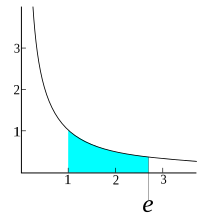
Photo from wikipedia
Micro-electrochemical spark machining (micro-ECSM) process exhibits good potential to process any materials with high dimensional accuracy and surface quality. However, the tool erosion (due to sparking) in different directions affects… Click to show full abstract
Micro-electrochemical spark machining (micro-ECSM) process exhibits good potential to process any materials with high dimensional accuracy and surface quality. However, the tool erosion (due to sparking) in different directions affects the accuracy of the finished features. Tungsten carbide (WC) material is widely used as a tool material to minimize dimensional inaccuracy of the machined part. Tungsten is a potential alternative tool material for this process, having melting point higher than WC. Due to the high melting point, the radial and axial erosion may be reduced significantly. The in-depth study on tungsten tool erosion (wear) behaviour has not been studied widely. In this work, the influence of different input machining parameters on tool erosion behaviour has been explored. The influence of voltage, duty factor, pulse frequency, electrolyte type, their concentrations, and tool immersion length in the electrolyte was considered for the analysis purpose. The results reveal that voltage is the most influencing parameter for tool erosion which mainly occurs at the bottom edge, whereas electrolyte level is the least influencing parameter. The tool weight loss is increased to 153% by changing voltage from 50 V to 60 V whereas axial length loss is 146 µm at 60 V is observed. Further, the micro hole is fabricated at machining parameter voltage: 50 V, duty factor: 40%, frequency: 6 kHz, NaOH electrolyte of concentration 2 M, and 2 mm electrolyte level. The wall surface of the hole shows an average surface roughness of 4.31 µm having the average recast layer thickness and HAZ of 31 µm and 56 µm, respectively, at the edge of the hole.
Journal Title: Proceedings of the Institution of Mechanical Engineers, Part E: Journal of Process Mechanical Engineering
Year Published: 2023
Link to full text (if available)
Share on Social Media: Sign Up to like & get
recommendations!